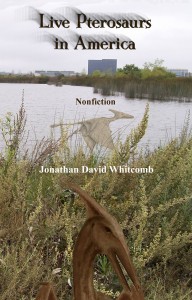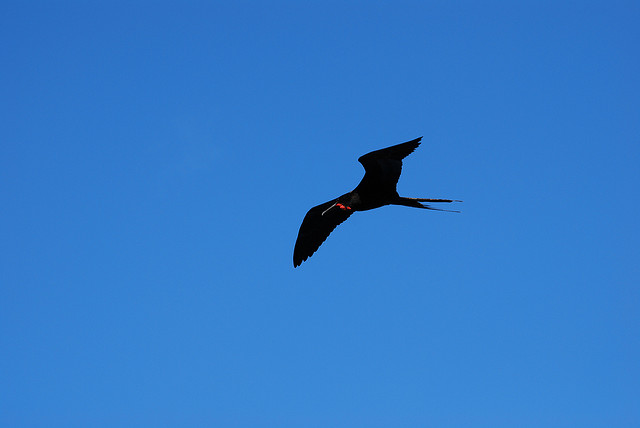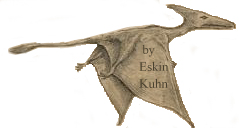During my eight years of investigating reports of living pterosaurs, I never suggested that no species of pterosaur is extinct, that all of them are alive; I have simply maintained that not all species are extinct. The fossil evidence of many species (however long ago those flying creatures flew), combined with the rarity of sighting reports, makes a strong case for many extinctions at some time or times in the past; but the simplistic dogma of universal extinction of all pterosaur species—that assumption has no support from those many fossils.
Simplicity and Occam’s Razor
In science, Occam’s razor has also been called “the law of succinctness,” but the simplicity of that label can be misleading. It does not really mean “the simplest explanation is most likely correct.” A better definition might include “when competing hypotheses are otherwise equal in explaining something, the simpler hypothesis deserves preference, unless and until the less-simple one is someday found to explain things better.” In other words, referring to Occam’s razor does not excuse somebody for rejecting a complex idea and accepting in its place an apparently simpler idea that does not explain the data as well. The truth about something is not always simple.
Sun-Centered or Earth-Centered Solar Sysytem?
Before Copernicus, what would have seemed the simplest explanation for motions of sun and moon? Ignoring the nocturnal motions of stars and planets, the sun and moon appear to be about the same size; they also move at about the same speed and in about the same trajectory. Perhaps the brilliance and power of the sun could be related to its slightly faster speed across the sky. But observing only sun and moon, how could we have concluded that the moon flies around the earth and the earth flies around the sun? How simple to believe what everyone else believes! Both orbs appear to be the same size and appear to move in about the same way, so why not support the popular view? Surely the sun and the moon both circle the earth, or so it would have seemed.
Before Copernicus, what could have influenced us to suspect something else was happening? I suggest looking at something different, gazing into the sky at a different time, for the apparent motions of countless stars might have taught us something. In the Northern Hemisphere, the North Star remains in the same apparent place all night, while stars further away from it move ever faster accordingly. I don’t know if I would have been intelligent enough and patient enough, before Copernicus, to figure out what we now take for granted: The earth is spinning. But that alone does not automatically tell us anything about any other motions of earth, sun, and moon. We would have needed to dig deeper, and that would have been more challenging a problem than most of us could have met successfully.
But Copernicus met that challenge successfully, although it took him many years. In more recent generations, calculations and spacecraft journeys have validated the model of a sun-centered solar system, notwithstanding the complexities. How does all that relate to pterosaur extinction or non-extinction?
Live Pterosaurs
Before ropen expeditions in Papua New Guinea (late twentieth century through early twenty-first century), how simple it was to believe in the extinction of all species of pterosaurs! How rare were the publicized reports of daylight sightings of apparent “pterodactyls!” But the truth about extinctions is not simple. I suggest looking with a different perspective, considering a different time for the flights of pterosaurs, for sightings in daylight are not from common appearances of extremely rare flying creatures; they are from the uncommon times, the rare appearances in daylight: somewhat rare flying creatures that are nothing other than nocturnal pterosaurs.
Just as the difficulties or complexities of calculations by Copernicus (a rare person who worked in that field for many years) were essential, including observations of the heavens at night, the difficulties of observing living pterosaurs by cryptozoologists requires years of work at night, for the overall evidence points to most, if not all, modern pterosaurs being nocturnal. Few of us cryptozoologists have many years available for that work. (I hope that increasing the numbers of dedicated cryptozoologists will bring us closer to dramatic discovery: the capture of a living pterosaur, with long-term study of the creature in captivity.)
The sun-centered system proposed by Copernicus surely appeared on the surface more complex than the long-accepted system of both sun and moon orbiting the earth. But those detailed observations, carried out over many years, are better explained by his new model, making it actually much more complex to equally-well explain everything by the old.
Of course universal extinction appears simpler than partial extinction, but the many eyewitness testimonies cannot be ignored. Why hold onto the putrid carcass, the antiquated dogma of universal extinctions of all dinosaurs and pterosaurs? Recent human experience should be held in higher esteem than outdated, misdirected imagination that has no basis in human experience. When the overall observations are taken into account, the simplest explanation is modern living pterosaurs, making it actually much more complex to equally-well explain everything and still hold onto the old model of universal extinction.
This requires clear thinking, something we sometimes find lacking.






